Thomas Karlsson, A Exclusive Interview

THOMAS KARLSSON Is a scholar in history, religion, mythology, runosophy and philosophy. He is also the author of contemporary seminal works dedicated to Kabbalah, Goetia, Qlipoths and the Runes. He holds a doctorate in history of religion and a master’s degree in history of ideas from the university of Estolcomo, Sweden. Since 1996 was the lyricist responsible for several songs of the band THERION (already interviewed by the REDE VAMP). He is the founder and leader of the ORDO DRAGON ROUGE, discreet order and magic-initiatory society that works with the Left Hand Path. He recently participated in the International Left Hand Path Consortium in the city of Atlanta in the United States and organizes lectures and conferences on the mysterious Island of Capri in Italy. And today he gives his first interview to Brazil and South America. Here in REDE VAMP! Our gratitude especially to our friend and reader Daiana (wife of Thomas) that allowed such an Internet meeting and excellent chat.
*Há uma versão em português desta entrevista, aqui.
Lord A:. Sometimes when reading his books have the impression that your approach LHP and even the Qlipoth is a kind of translation VIKING these contents. Its like the old way of the Goths to appropriate the symbols, myths and rituals feared by his opponents and interpreting and make use of in their favor in clashes. Is there something like that?Thomas Karlsson: If we seek to discover the roots of the dark magical tradition we will encounter the Goths and Gothic magic. The Goths are a people whose roots lie in the North. The mythical peoples of the North were even mentioned in the writings of the ancient Greeks. Over the course of history these myths have become interwoven with historical facts; reality and fantasy are often difficult to distinguish from one another. Dragon Rouge don’t put main not main focus on historical details, but rather on Gothic magic viewed in terms of its mythical and archetypal foundations. North is a representation of Nightside, but on the Southern Hemisphere the same goes for the South. Both the Northpole and the Southpole are gates to The Other Side (in Qabalah refered to as Sitra Ahra). I have my personal ancestral background from Gotland, an island in the Baltic Sea where we find the oldest findings of Scandinavian spirituality. So from a personal pint of view this heritage means a lot although I emphazise tat under the surface you can find the same Draconian current in all true esoteric traditions.
Lord A:. As the work of Johanes Bureus entered his life and was even responsible for one of his books that is my favorite.Is magickally useful your runes, weapons and tooling even today? If you could clarify or highlight some of your favorite spots the work of Bureus, what would be?
Thomas Karlsson: The most important contribution of Bureus is that he bridges between ancinet Viking magic and the rune wisdom of Odin and the occult world of his the, The Renaissance with its new and deepend knowledge of Magic and Qabalah (via Pico, Reuchlin, Agrippa to name a few). His system is however very pragmatic compared to for example John Dees Enochian magic. Almost everything in Bureus Adul Runa-system can be applied together with ideas and methods from the Qabalah, the Tantric tradition or ancient Greek Mystery Cults. His use of Runes is a revival of Runes as seals for the highest spiritual goals.
Lord A:. Shadowseeds was a musical project of his own that I loved, especially the album “Der Mitternacht Löwe” and the influence the Bureus’s work is remarkable alí. There plans for more Shadowseeds albuns or new solo musical projects or new partners in progress?
Thomas Karlsson: There will most likely be a new Shadowseeds album some day, but no concrete plans yet. I collaborate with bands such as Therion, Serpent Noir, Kaamos, Luciferian Light Orchestra and Ofermod. Bands connected to the Draconian Current. My Brazilian wife and I working on a musical project with some inspirations from bands such as Dead Can Dance and Death in June. My cousin who is one of the first members of Dragon Rouge. and I have old plans for a Draconian Techno project, but that is not our priority at the moment since we have much to do with ordinary works, familiys etc.
Lord A:. 2016 runes are known in much of the world and there are many runólogos – or people who claim to develop such activity. As has been watching around the world this resurgence and expansion of Asatru and Heathen, Norse gods and their values?For you Bureus work was instrumental in the revival of Runas
Thomas Karlsson: The interest in Runes have grown all around the world. When I lived in China for a while people were really intersting in the mysteries of the Runes. There has been three major epochs of Runbic revival: 1) in The Scandinavian Renaissance with Johannes Bureus as the foremost person, 2) in the early 19th Centruy in Germany and Austria with persons such as Guido von List, and 3) in the 1970s and onwards with Dr. Stephen E. Flowers as a key person for this revival. Some individuals are interested in Runes for as an expression for their romanticism in Viking age, but to me and other esoterics The Runes have their value as seals in the way we can use ancient Greek, Hebrew or Sanskrit in a simliar way.
Lord A:. By the way, how was your start in what we now call for convenience of occultism, spirituality and magic? What attracted you in the beginning and what inspires you, motivates and influences in the present?
Thomas Karlsson: I had astral experiences as a child and it would put me on the esoteric path. They were a natural part of my life and occured mostly through lucid dreams. As a young child lucid dreams and astral projections were nothing more supernatural than everything in life. It was when I was about twelve I realized that it was considered occult and even suspicious, something which fuelled my interest in the occult. I’m sure the milieu where I grow up somehow influenced my interests. Growing up in Sweden, a secularized christian society with a widespread atheism and an almost religious belief in Enlightenment, probably helped me getting involved in darker forms of occultism. The dark side and the left hand path is a way to break patterns to be able to dictate the conditions of your own life. It is a kind of spiritual existentialism, emphasizing will, choice and responsibility. In essence I am nevertheless influenced by the values of my upbringing, although I from a practical point of view have gone beyond the current paradigm and explored what today is thought of as supernatural realities.
I have been involved in the esoteric mileu for more than two decades and have a broad interest in these fields. My basic view is that reality is more complex than any system fully can define. No tradition is perfect and there are gaps in all maps of reality, and it is consequently necessary to compare different traditions too find the immanent underlying occult structurs. I have however focused upon the specific initiatory meta-tradition called the Left Hand Path, which emphazises the darker aspects of esotericism.
Early experiences of a so called occult nature made me interested in esoteric studies and I had several influences. I was inspired by the kabbalistic tradition and especially its dark sides and compared it with concept and practices in tantric systems. Runes and the nordic myth have been a natural part of my spiritual work, but also avantgarde art. Surrealists such as Dali and Breton have had an impact on me from the early days and my understanding of the occult has been influenced by their ideas.
On my path I have sworn Oaths to the utmost power and intelligence which I name The Dragon, but to other mystics could be named God. My two main focus in life are 1) Take care of my children, family and friends 2) continue my work as the head of the Draconian Current in the world in this aeon.
 Lord A:. Tell us about Ordo Dragon Rouge.All people are welcome in Ordo Dacron Rouge, you need something to integrate?
Lord A:. Tell us about Ordo Dragon Rouge.All people are welcome in Ordo Dacron Rouge, you need something to integrate?
Thomas Karlsson: Everywhone, no matter background is welcome to apply to become a member, but if you can’t work loyal with your sisters and brothers in an Order you can’t be a member. To be in an order such as Dragon Rouge you must leave childish ego behind you, as well as counterproctive attititudes. In Dragon Rouge we expect an open mind, open discussions, and dicipline and a strong wish to contribute and work hard for our personal and common goals.
Lord A:. It’s been over a decade since his book “Kabbala, kliffot och den goetiska magin” was published to us REDE VAMP it is a true classic of the genre – in your view what were the main contributions, influences and developments of this work in multiple contexts?
Thomas Karlsson: The book Kabbala, kliffot och den goetiska magin” has set a new standard all over the world and is the first hand source to knowledge about our field, although I also wish to mention my book Amongst Mystics and Magicians in Stokcholm for another way to get knowledge of Draconian work from a more personal based desciptions.
Lord A:. UPPSALA is impossible not to get involved and be enchanted by the respectful tone and great experience in lending their works to this temple. Can you talk a little bit about your experience and discoveries there
Thomas Karlsson: Uppsala is one of the oldest University towns in Scandinavia and also the place where there was the main Viking temple of Thor, Odin and Freja, mentioned by Adam av Bremen 1076. In Uppsala University the handwritings of Bureus are collected and you can also get the chance to see the Gothic Silver Bible, Codex argenteus, from early 600 century. It is a magical soil, acnicent Nordic cult place as well as one of Northen Europes most important University towns.
Lord A:. GOTTLAND! I follow your posts and photos from there, I know there is a temple of the ODR there and the profound respect that nourish the ancestry this island. We will know more of this mythical place in their next books?
Thomas Karlsson: Gotland is the womb of all ancient Nordic spiritualy. The oldest rune stones, the picture stones of Odins travels to other world, the witch goddess stone etc etc are found on Gotland. Later this tradition came to main land Scandinavia. On Gotland you walk on the soil of the Gothic Nordic mystery tradition and it is stillm alive all around you.
 Lord A:. Thomas, as you see the use of the term Gothic nowadays used to describe contemporary aesthetic lacking and even holding an adversarial tone or used without any relationship with people Goths and Visigotos or distant Gottland?
Lord A:. Thomas, as you see the use of the term Gothic nowadays used to describe contemporary aesthetic lacking and even holding an adversarial tone or used without any relationship with people Goths and Visigotos or distant Gottland?
Thomas Karlsson: We must accept some trends and the Gothic subculture of today provides a lot of good thing. It can work as a seed to deeper understanding of the Gothic mysteries. To most it will be just a subcultural attitude, but to some it leads on to true understanding.
The Goths were not only viewed in positive terms. In European history, the Goths have primarily been seen as a dark, dangerous and destructive people. They were considered to be barbarians, and “the Gothic” was something dark and primitive. During the Renaissance, the Goths represented the cultural decline of the Middle Ages. The Gothic is viewed as the antipode of ancient civilisation and the classical ideals of beauty.
The conflict between the Gothic and the classical continues throughout western cultural history. The classical ideals are founded upon clarity, reason, light, laws and structures. The Gothic ideals are metaphysical and are constructed of archaic visions, dreams, darkness and shadows, inspiration and obsession. In the lyrical tradition, Classicism is characterised by a pragmatic view of poetry that emphasises rules and practical skills, while the Gothic merges with a metaphysical view of poetry in which the content is more important than the form. In architecture, the word “Gothic” became a pejorative term used to describe a tradition of medieval church building. Prime examples of this are the cathedrals of Cologne, Strasbourg and Notre Dame, with their grandiose and pointy style.
Although the style probably originated in twelfth-century France, it was pejoratively called “Gothic” or “German”. With its pointy style, the Gothic building tradition was associated with wild or untamed nature. Gothic buildings were likened to icicles, huge ancient trees, and caves with stalactites and stalagmites. According to classical aesthetics, the Gothic represented something tasteless and overgrown, threatening and terrifying. Eighteenth-century German intellectuals such as Herder and Goethe would later re-evaluate Gothic aesthetics and Gothic architecture in a much more positive way.
Nevertheless, the Gothic tradition remained connected to wild nature and the terrible. During the nineteenth century, a romanticism of ruins was gaining prevalence in certain artistic circles. The resulting depictions included elements such as graves and tombs and overgrown Gothic churches, merging with untamed nature under the full moon. Caspar David Friedrich and Arnold Böcklin were two of the main representatives of this romanticism of ruins. The Gothic became connected with the romantic idea of the sublime. The sublime referred to a grandiose impression of the mind that inspired fear but also fascination. The Gothic style also entered literature. The English Gothic romantics made reference to an “enthusiastic terror”, and the pure, clean, structured Classicist ideals of the light were avoided. Instead these artists soughts sought out the imagery of gods, demons, hell, spirits, souls, enchantments, sorcery, thunder, floods, monsters, fire, war, plague, starvation and so forth. Sublime fear was believed capable of providing man with knowledge about a greater reality that could not be trapped within the confines of reason. Edmund Burke was a leading philosopher of this current, and important literary writings included poems Edward Young’s “Night Thoughts” (1742) and Robert Blair’s “The Grave” (1743). Ruins became highly popular as an element in landscaping and a need arose to construct new and artificial ones, since the existing ones were not enough. The ruin symbolises the cycle of nature and how the forces of nature and chaos ultimately annihilate human ideals and constructions. In the Qabalah we can recognise the principles of the ruin under the name Qliphoth.
The polarisation between Classicism and the Gothic represents the polarisation between dark magic and the magic of the light. The magic of the light is based on rationalisation and an idealisation of reason. Both the Jewish Qabalah and “light” forms of freemasonry strive to establish a holy geometry from which the Temple of Jerusalem shall be rebuilt. From this perspective, the dark forces of ruin are naturally viewed as threatening. In a Qabalistic worldview, it is the dark and Qliphotic powers that are destroying the Temple of Jerusalem. The Temple of Jerusalem is a symbol of the totalitarian power of God. The side of light represents mathematical and geometrical generalisations; the dark side represents the fractals and the chaotic element of chaos mathematics.
Classicism strove to imitate a simplified and controlled nature, with the geometrically designed garden as a pattern. For this conception of reality, the irrational ideals of Gothicism seem like an expression of bad taste. When the view toward nature changes, when man becomes aware of the twisting elements of wild growth and starts to explore the uninhabited clefts and precipices of mountains, a respect for the aesthetic qualities of the Gothic tradition is regained. The castle architects then abandon the classical geometrical structures in favor of irregularity. The disciplined trees become wild, the lawn becomes a field, the pool becomes a lake and the garden path becomes a winding trail for the brooding philosopher, where he walks alone and immersed in his melancholic thoughts.
This view of nature is connected with the ideals of the Draconian current. The turning away from what is pruned and structured is an acknowledgment that chaos is reconquering the Garden of Eden and that the Dragon awakes again. While Classicism and the ideals of the light are oriented toward rules, order and the collective, the Gothic tradition is concerned with the unique: genius, deviation and originality. Since the dark side emphasises the unique, its practitioners have always risked persecution, as has occurred during the various witch crazes throughout the centuries.
Lord A:. You recently participated in the “The Left Hand International Consortium” in the United State.Please tell a little more about your lecture presented there and their view of the importance of an event like this to all and the various spiritualities within it.
Thomas Karlsson: First of all I will honour those who arranged this Consotrium. They have set a new good standard for collaboration in the LHP mileu. I was key note speaker and lead also a Lucifer-Lilith-Leviathan working. My lecture was about the posibility to define the LHP. My main points was LHP is:
-
- Methodological, but not necessarily essential, dualism (rather often the opposite with an inherent monism), based upon the alchemical and tantric idea of polarities generating power.
-
- .Idea of the “left”, i. e. the divergent is the esoteric. An idea often combined with elevating the feminine, the dark, inferno, the moon, the expelled etc. etc.
-
- The “low” as the latent “power station” for reaching the “high”, compare with kundalini shakti as the force of transcendence, and the ancient mystery cult motif of entering Inferno/the underworld to reach Heaven or Paradise (a motif also in Dantes Inferno etc). A concept common in alchemy where the prima materia is the prerequisite of the ultima materia, and the lead of Saturn corresponds to the gold of the Sun. In Christian mysticism it’s the meaning of Christ mocked and in Shamanism the importance of the Underworld initiation. The Stone is the spirit, the Dragon is God and so on.
-
- Apotheosis, but with the reservation that below the highest initiatory degrees we can’t really know what this means, and what the word “god” exactly denotes.
-
- The sacredness of periphery. Chaos, Tao, the Witch/Hagzissa travelling beyond the borders etc
-
- Antinomianism, in the spiritual and philosophical meaning: a) Defining the utmost realities through negations and b) going against the grain, to be aware of unconscious patterns c) building a higher moral through breaking free from simple social morality defined by the majority (a concept actualy close to ethical idealism).
- Elevating Sofia, and knowledge, the serpent of Eden as an ally to the adept, and basically the same as Messiah, the saviour (the Gematria 358). The Faustian and Promethean nature of the LHP.

Lord A:. Thomas, as a longtime fan of his work would not like to end this interview without praising your work as Lyricist THERION and say that some of their holdings positively shaped many moments of my life. But all those songs at this point which is the one you likes to have created? It would be possible to talk a little about it and its myths
Thomas Karlsson: Therion has meant a lot to me and I have enjoyed writing the lyrics. Everything I write is connected to th Draconian Tradition. It is hard for me to choose, but I am very fond of both music and lyrics in Draconian Trilogy of VOVIN (*Vovin means Dragon in Enochian):
Red dragon from the first morning of time, Red dragon of ancient depths of the mind, Rise up from the abyss of ignorance, Coil into the existence of the blind. Morning star please bear your light, Through the day to next night. Fallen one who stole the spark, Bring it into the dark. O Typhon apep lothan O drakon Typhon apep lothan Morning star please bear your light, Through the day to next night. Fallen one who stole the spark, Bring it into the dark. Dragons of tomorrow flying to their babel of yesterday, They open the seal of Sorath and release the eleventh ray”.
[youtube video_id=”m58yQ2WfM8Y” placeholder=”no” ]
Lord A:. Recently you were in the Isle of Capri in Italy talking about the myths, the story of this very important place to the occult and magic as a whole. Share with us some of these stories and about the event that happened there..
Thomas Karlsson: Capri is known as a meeting place for the most powerful people in the world. Already Emperor Augustus moved there to rule the Roman empire. It has also been a meeting place of sinister and expelled characters in history, with rumours of Black Masses going on in secrecy in the Aristocratic Villas. The island Capri is a dreamlike liminal place where land and the ocean, night and day, myth and reality blends. The Swedish Medical Doctor Axel Munthe describes his meeting with the red-cloaked figure in the beginning of his book Story of San Michele. It is a central condition for the story. The figure is Mephistopheles and appears throughout the story. A contrast motif – A storytelling clairobscure technique: The Demon of Darkness helps Dr. Axel Munthe to build his Temple of Light. I have been to Capri reguarly in ten years and I am happy to arrange confererences in Villa San Michele, which is one of the most exclusive villas in the world. Villa San Michele is like the rest of Capri surrounded with Mephistophelean legends and rumours of Black masses.
Lord A:. We have heard rumors of a possible conference here in Brazil in 2017? You can tell a little more?
Thomas Karlsson: Since I am married to a Brazilaian woman I from personal lveles also nourish a deep interest in Brazils multifaceteted culture and I look for every possibility to go to Brazil and to strengthen the Scandinavian-Brazilian connection. Brazil is without soubt one of the most fascinating countries with a boilng apirituality. Her Majesty Queen Silvia of Sweden is btw from Brazil. In my mission is to work frequently between the Northern and the Southern Hemisphere, since The Dragon is everywhere. I see a growing interest and power in all of South America and I see a fantastic potential for coming Draconian manifestations in Brazil and other countires in South America.


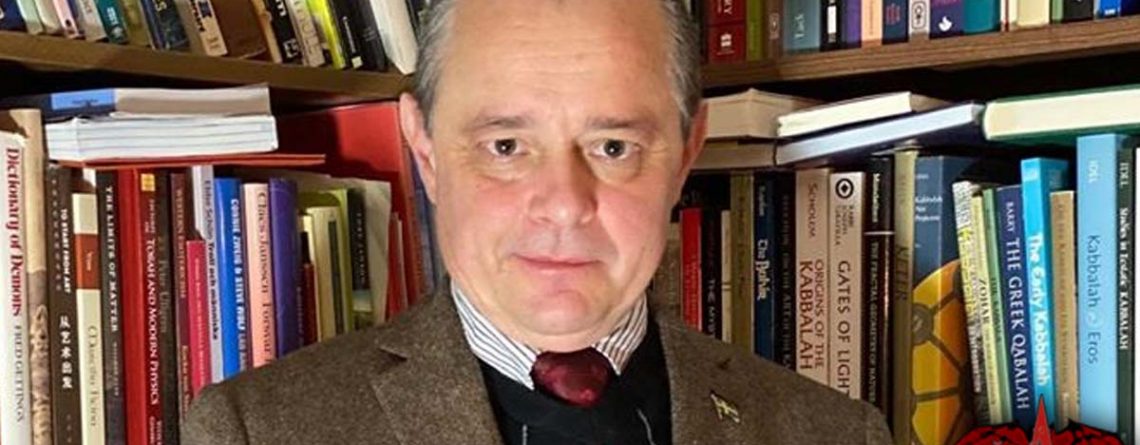

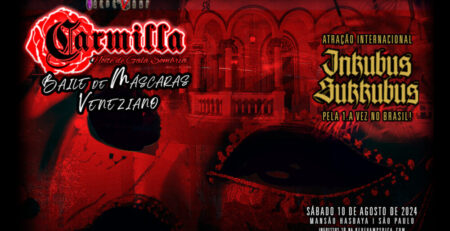
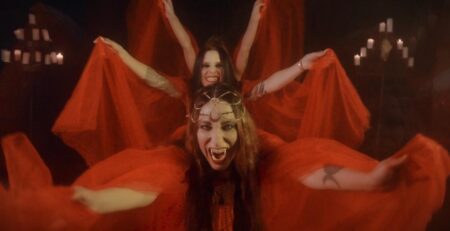
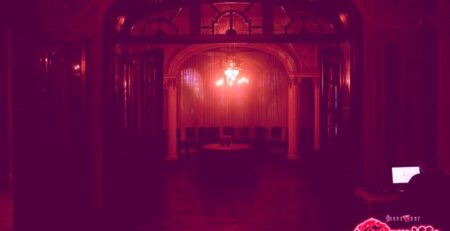
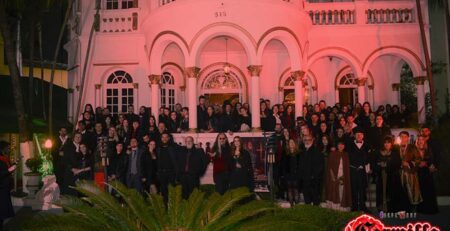
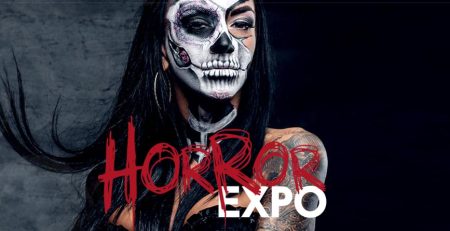
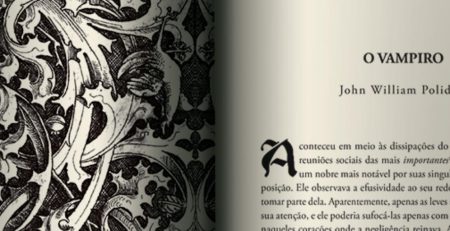
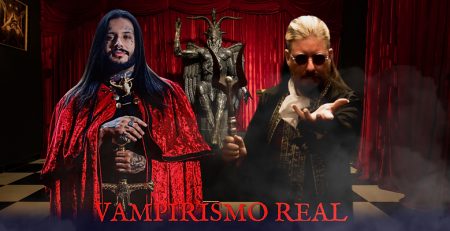
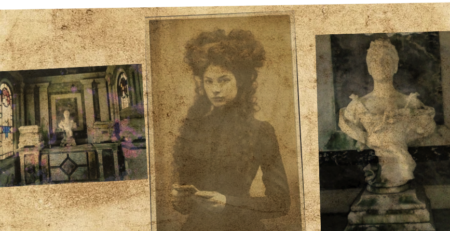
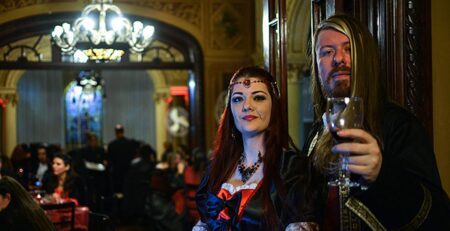
Deixe um comentário